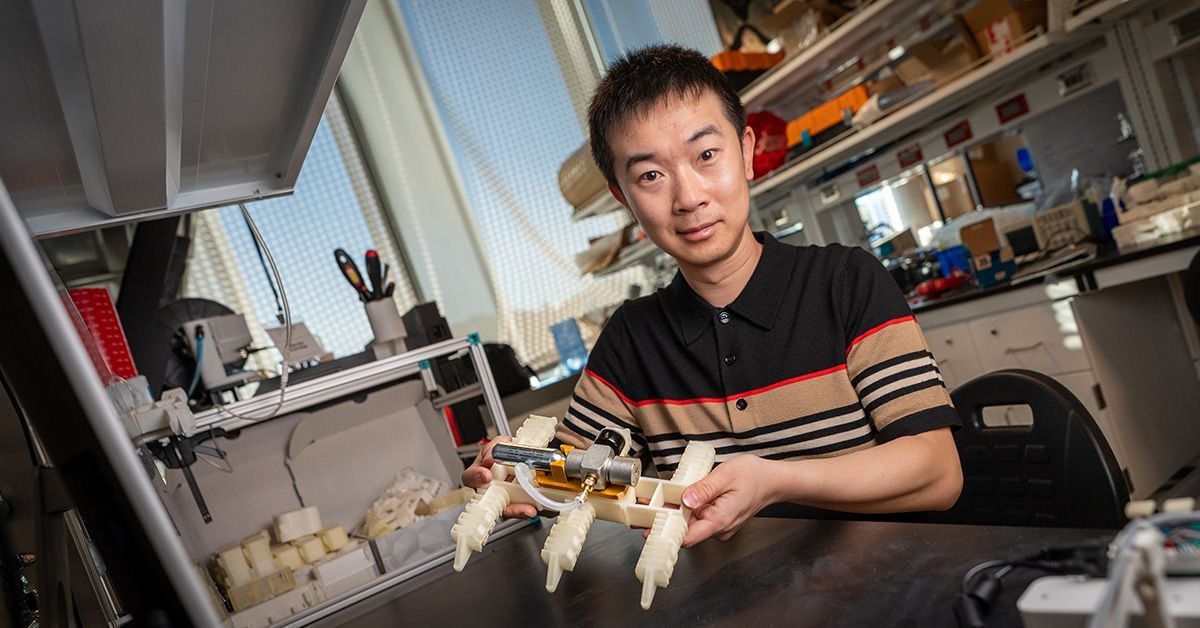These Electronics-free Robots Can Walk Right Off the 3D-Printer.
(today.ucsd.edu)
from Tea@programming.dev to technology@lemmy.world on 25 Mar 14:05
https://programming.dev/post/27509637
from Tea@programming.dev to technology@lemmy.world on 25 Mar 14:05
https://programming.dev/post/27509637
Imagine a robot that can walk, without electronics, and only with the addition of a cartridge of compressed gas, right off the 3D-printer. It can also be printed in one go, from one material.
That is exactly what roboticists have achieved in robots developed by the Bioinspired Robotics Laboratory at the University of California San Diego. They describe their work in an advanced online publication in the journal Advanced Intelligent Systems.

threaded - newest
They created golems powered by compressed air instead of magic.
Definitely marking this down in my mental, “in case of Isekai” notes.
Somewhat misleading headline but still cool
Now make a robot that can make a new 3D printers to make new robots.
But how would they do that, without electronics?
Just kind of spitballing
For starters, you design a robot whose design is to take, for example, 100 steps forward, then take 100 steps back. Then you could:
Have it take a scoop of soil before it turns back, you now have a sample to test
Put some kind of chemical test strips (litmus paper, water quality, etc.) on it and send it towards a puddle of water you want to test. It splashed into the water and comes back, now you can see what the results on those test strips say
Not all electronics are so sensitive to radiation, and to some extent they can be shielded. Building a whole digital robot that’s hardened against radiation would be difficult and expensive. Sticking a couple radiation hardened sensors on an otherwise dumb pneumatic robot that doesn’t need to be hardened would be much cheaper.
Send the robot in with analog measuring tools- thermometers, barometers, film cameras (radiation can expose film, so picture quality may not be great, but it’s better than nothing, and just seeing how exposed the film is could be used to get a rough idea of the radiation level) etc.
Say there’s a big rock, and you need to know what’s behind it. Nowhere in the safety zone has a good viewing angle, and it’s either unsafe to fly over the area or there’s too much tree cover so you can do aerial photography. So you stick a mirror on the robot and send it out somewhere behind the rock off to the side o bit. Now you can look at the mirror through some binoculars or a telephoto lens and see what’s behind the rock in the reflection.
These are just a couple off the top of my head ideas as a layperson, I’m sure that a scientist or engineer actually doing this kind of work whose entire job is to think about this could come up with plenty of other good ways to use this sort of thing.
Electronics definitely make things easier, but we’ve had people doing science for millennia before we figured out how to do anything particularly useful with electricity.
What, you mean like, mechanical? (Imma read the article now but this sounded funny to me…)
Just like spiders do. Hydraulics power the legs. Very cool.